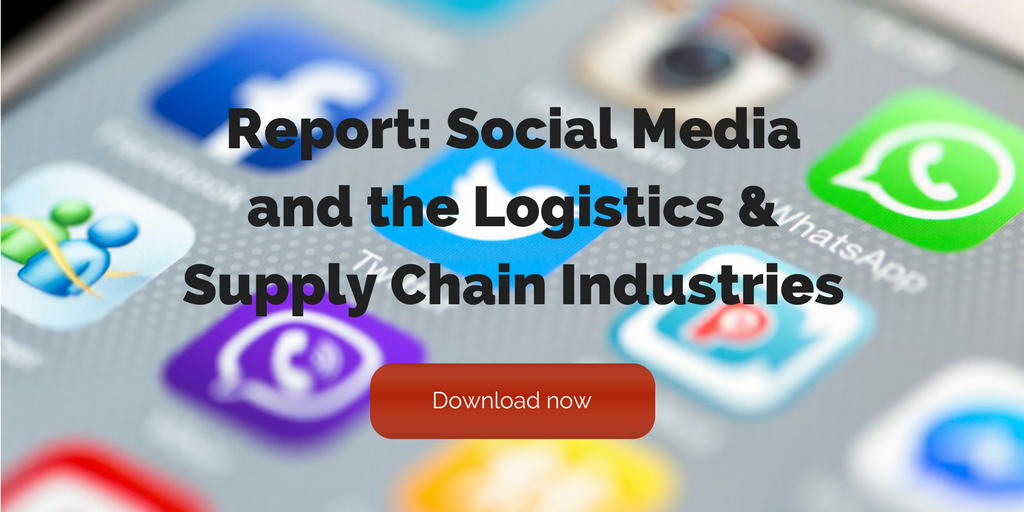Companies in the supply chain and logistics industries should take note of these 4 trends that are gaining traction as we move into 2018.
Joe Pulizzi of the Content Marketing Institute recently revealed his predictions for the biggest trends in content marketing for 2018. As the founder of CMI, Pulizzi dedicates his time discussing how content marketing has evolved with leading marketers from around the world and keeps his finger on the pulse of content marketing trends.
Most of the predications we discussed for 2017 are still holding true as we roll into another calendar year. Supply chain and logistics companies are still working overtime to nail down a true content marketing strategy. Native advertising is still the “gateway drug” to content marketing. And the growing dependence on mobile devices has continued to skyrocket.
What does this mean for 2018?
The key trends from 2017 continue to highlight the importance of good content. With over one million new-data-producing social media users each day, high-quality content is the only way to stand out from the masses. As you start to strategize for next year, and beyond, be sure to consider these trends in your supply chain marketing plans.
4 content marketing trends for 2018
1. Original content is king
A recent report claims that Apple is planning to invest over $1 billion on original content. Why the hefty price tag? As competition in the mobile space continues to heat up, brands need to do more to stay relevant. Valuable, original content can help companies like Apple grow its audience and keep its current customers coming back for more.
What does this mean for you? Pulizzi believes that this trend will offer companies multiple options to monetize their content. Either through direct sales to customers or advertising and sponsorship opportunities, supply chain and logistics companies will be able to cash in on their original content.
Make sure to keep a close eye on your competitor’s content. More and more companies will see the value in original content and look to build loyalty and support from their growing audience.
2. Creating vs. purchasing
For those supply chain and logistics companies that don’t have the time or resources to invest in creating original content, acquisitions will offer a pricey solution. 2018 will see a spike in content marketing brand acquisitions, giving companies full-service content options. Back in August, Netflix acquired Millarworld, a comic book publisher, hoping to gain traction with cutting-edge content in a host of different mediums.
While 62% of companies outsource their content marketing, the rise in acquisitions highlights the value of content creation and distribution. The decision to create content vs. buy will depend on the size of your wallet.
3. Content marketing budgets on the rise
According to Marketingmag.com, content marketing will become a $300 billion industry by 2019. That’s a lot of money being spent on content creation and distribution, which can only mean one thing: content marketing budgets are increasing. 39% of marketers expect their content marketing budgets to increase this year.
More brands are seeing the effectiveness of content marketing over traditional advertising. Moving away from traditional advertising and optimizing your content marketing strategy will make your marketing budget dollars stretch further and work harder in getting your content in front of the right people.
4. Content marketing overlap
Many of us are familiar with Marcus Sheridan’s story about the success of his pool company and starting the Sales Lion. Desperate to save his company, Sheridan threw himself into content marketing and created the most-visited swimming pool website in the world. Sheridan’s biggest take away? Marketing is a team sport. “Want content marketing to work? Involve everybody on your teams,” writes Sheridan.
Content marketing doesn’t work in a silo and without leadership. For content marketing to be most effective, leaders need to give clear ownership to someone over your content marketing strategy. From there, everyone needs to get on board, creating a culture of content. Your sales teams should integrate your content marketing into their sales processes. Your PR team should meet regularly with your social media experts.
“To say you have a culture of content is to say that everyone who works for your company understands the value of the information you provide and participates in making that information useful,” writes Marcia Reifer Johnston.
Overlap is bound to happen in your content marketing endeavors. The key is to have clear leadership over your strategy and regularly communicate your goals and initiatives, so your entire team can be engaged in your efforts.
Related posts:


